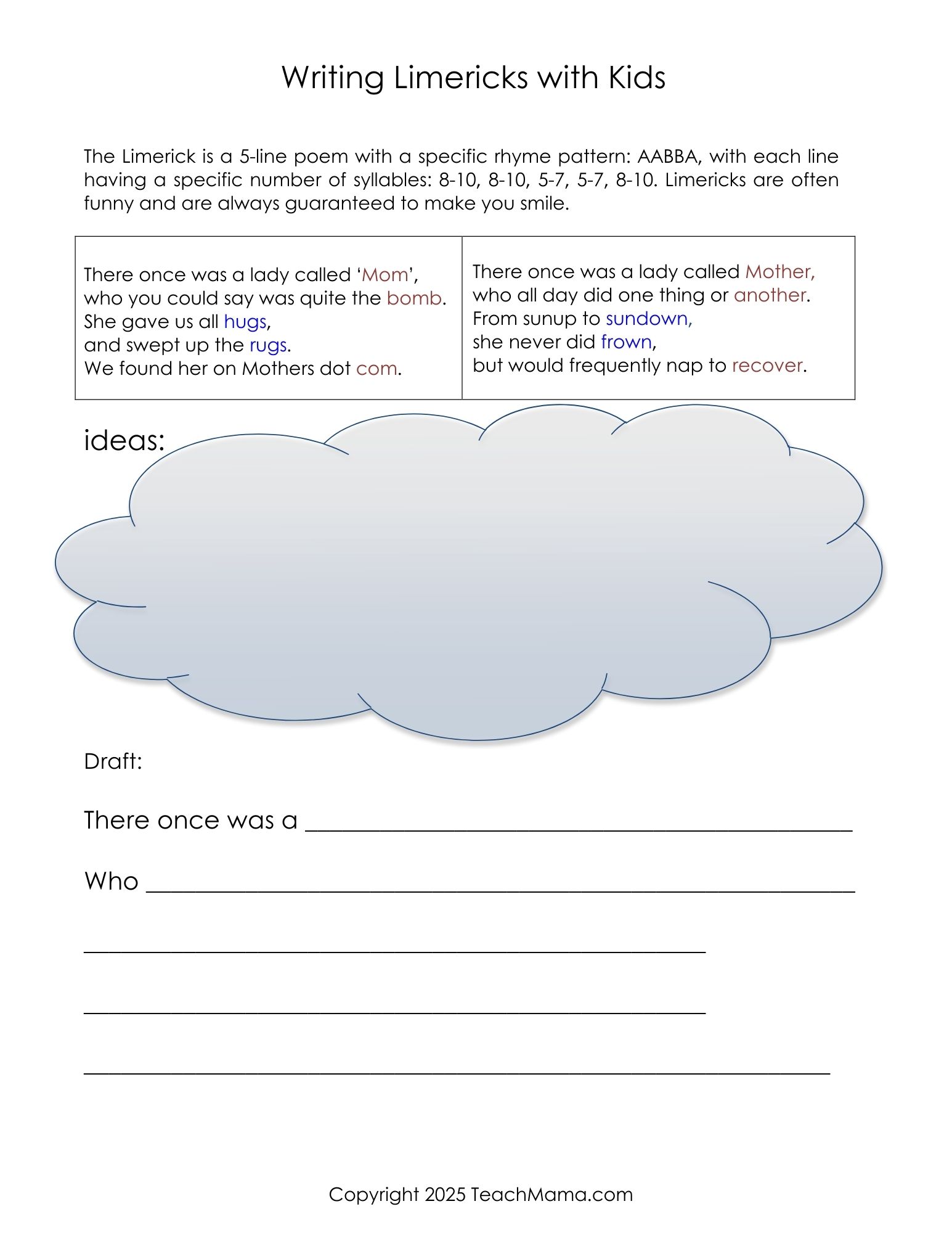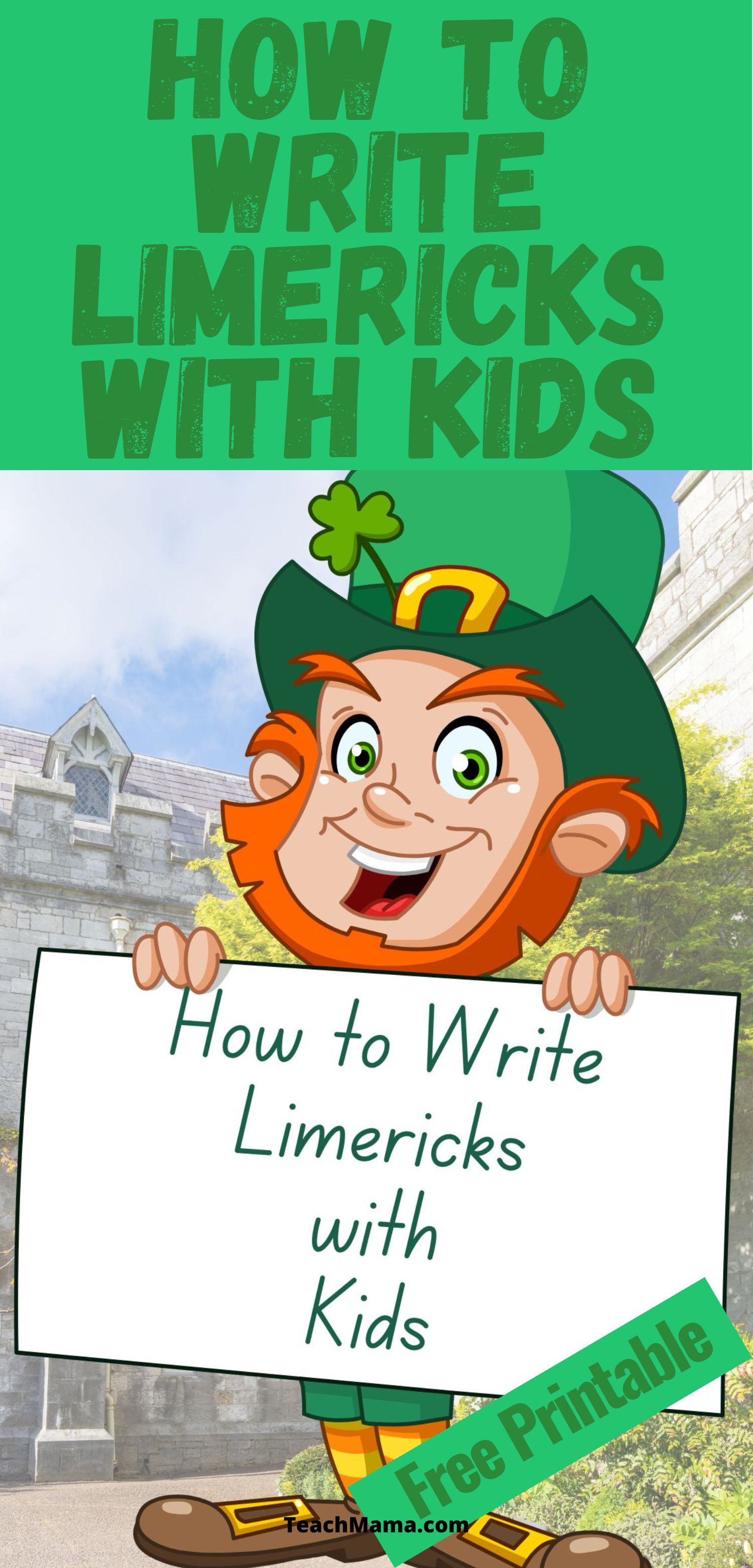Get ready to spark creativity and laughter! Kids will love diving into the world of limericks, where playful rhymes and silly stories come to life. Writing limericks is a fantastic way to boost language skills, explore rhythm and rhyme and practice creative writing—all while having loads o’fun! From brainstorming quirky ideas to crafting clever verses, young poets will be thrilled to share their unique creations. A fantastic introduction to poetry!

There’s a National Limerick Day?
Although National Limerick Day is celebrated on May 12 to honor Edward Lear, the Irish writer and illustrator who helped make limericks so popular, he didn’t invent them. Instead, limericks were started by soldiers from Limerick, Ireland sometime in the 1700’s. They made up funny verses about the people and places in Ireland during long boring military marches. And it caught on! Soon people all over were making up silly limericks
But What is a Limerick ?
A limerick is a short funny poem that tells an often wild and crazy story. It has only one stanza made up of five lines. The first, second and fifth lines rhyme and the third and fourth lines rhyme. Lines 1, 2 and 5 have 8-10 syllables while lines 3 and 4 have 5 to 7. It sounds complicated but once you read a few it will all make a lot more sense. So here’s a funny example to get you started:
A tutor who tooted the flute
Tried to teach two young tooters to toot
Said the two to the tutor
“Is it harder to toot, or
To teach two tooters to toot?”
Getting Started
To get started pick the rhyming word for line one and then in the Ideas bubble on the worksheet write all the words you can think of that rhyme with it. Do the same thing for the words that are going to be in lines three and four. Can you find a silly story in the words you picked?
Once you pick up the rhythm and sound of a limerick, they’re fun and easy to write.
For example:
There once was a lady called ‘Mom’,
Who you could say was the bomb.
She gave us all hugs
And swept up the rugs.
We found her on Mothers.com
The rhyme pattern is AABBA, with the syllables for each line being 8-10, 8-10, 5-7, 5-7, 8-10. The extra syllables allow a little wiggle room but you don’t have to use them if your rhyme doesn’t need them.
The trickiest part of limerick writing with younger kiddos is syllables. An easy way to help with this is to have them put a hand under their chin and say each word slowly and distinctly. Every time their chin goes down is a syllable!

One Last Limerick Just for You
If you’re a TeachMama fan
And you need a Limerick plan
Throw your email in the box
For a printable that rocks
And soon you’ll have it in hand!
Happy Limerick-ing!
Here are some other great St. Patrick’s Day activities your kids will love:
- St. Patrick’s Day BRAIN TEASER Scavenger Hunt
- Homemade St. Patrick’s Day Shamrock Craft for Kids
- St. Patrick’s Day Word Search for Kids
- St. Patrick’s Day Maze for Kids
- St. Patrick’s Day How Many Words
- St. Patrick’s Day Guess the Word for Kids
- St. Patrick’s Day Fun Fact Lunchbox Notes
- St. Patrick’s Day Joke Lunchbox Notes
- St. Patrick’s Day Activities for Kids
PIN THIS FOR LATER


Leave a Reply